
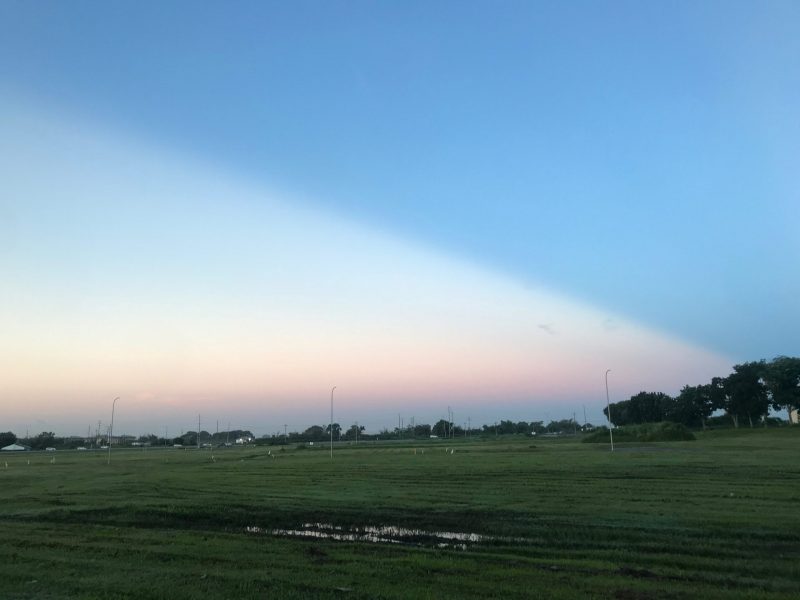
View at EarthSky Community Photos. | Jo-Ann Hem Lee in the community of Trincity – in the Caribbean island country of Trinidad and Tobago – captured this image at sunrise on October 9. 2020.
We’ve all seen crepuscular rays, or sunrays, converging on the sun. They appear as pillars of sunlight, all converging at a single point, streaming up from the horizon or down through gaps in clouds. Next time you see them … turn around.
If you look opposite the direction of the sun, you might catch a glimpse of elusive anticrepuscular rays. These rays appear to converge towards the antisolar point – that is, the point on the sky opposite the sun. If you want to see them, remember these three tips:
1. Look in the direction opposite the sun, next time you see crepuscular rays extending from the horizon.
2. Look carefully. Remember that anticrepuscular rays are fainter and more elusive than crepuscular rays.
3. Watch around sunrise or sunset for anticrepuscular rays. That’s when they are are most frequently visible.
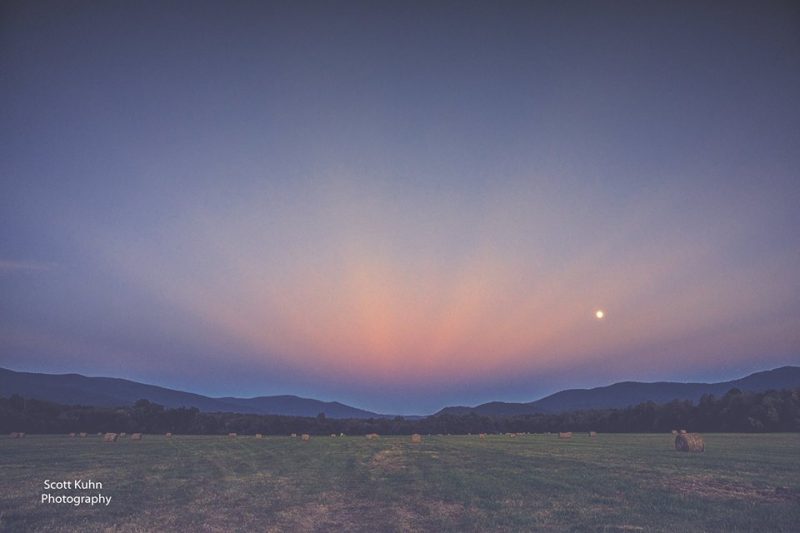
Scott Kuhn captured anticrepuscular rays as the moon was rising over Fort Mountain in northern Georgia.
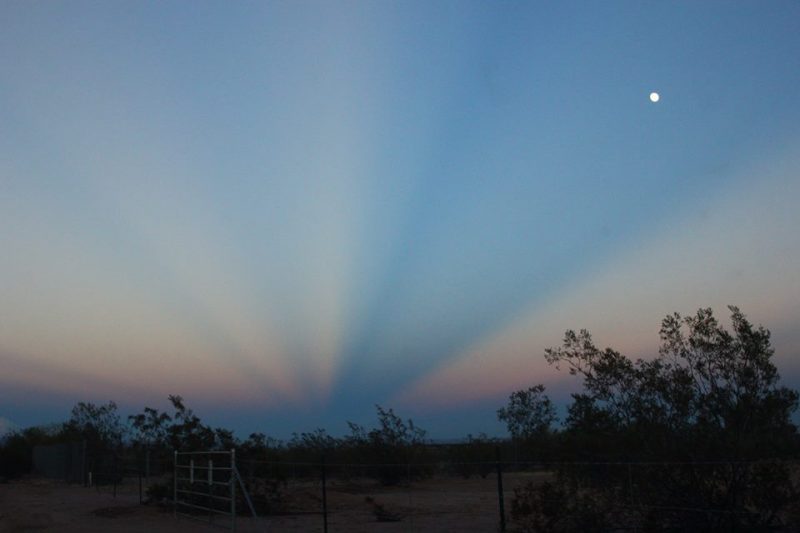
Laura Bavetz wrote, “I have seen anticrepuscular rays before, but this is the first time that I have been able to capture them.”

Helio C. Vital caught these anticrepuscular rays from Saquarema, 50 miles (80 km) east of Rio de Janeiro, Brazil.

Photo taken by Karl Diefenderfer in Quakertown, Pennsylvania.
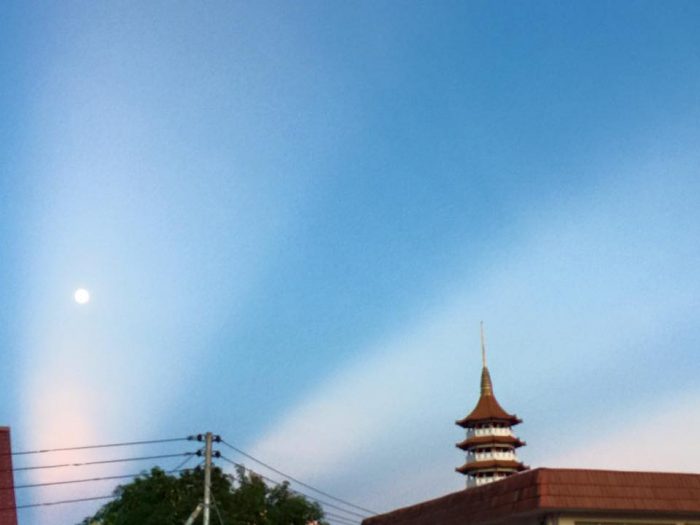
Jenney Disimon in Sabah, North Borneo, caught these anticrepuscular rays and a rising moon – and posted them to EarthSky Facebook – on June 4, 2015.

A moonset in 2014. The sun is about to rise in the east, and these rays are seen in the west. Photo by Ted Schultz of Titusville, Florida.

Anticrepuscular rays seen in the east at sunset, in Bermuda, by our friend Le-ann Perry. Notice the rising moon. Also, look in the lower right of this photo, where you can see a bit of Earth’s shadow over the sea.
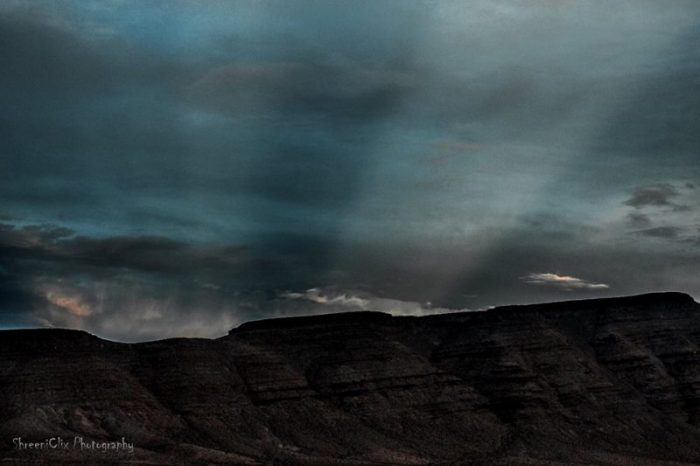
Anticrepuscular rays – seen in the east at sunset – in Nevada. Shreenivasan Manievannan posted this photo on EarthSky Facebook in July 2014. Visit Shreeniclix Photography.
Les Cowley of the great website Atmospheric Optics says:
Like crepuscular rays they are parallel shafts of sunlight from holes in the clouds and their apparently odd directions are a perspective effect. Think of a long straight road, it converges towards the horizon but turn around and it also converges to the opposite horizon. Crepuscular and anticrepuscular rays behave in the same way.
Anticrepuscular rays are not rare but they must be sought carefully. When ordinary crepuscular rays are visible, turn around and search for their opposite numbers.
See photo of crepuscular rays extending across the entire sky at Les Cowley’s website

Anticrepuscular rays over the Pacific, viewed from an aircraft. Photo by Geoffrey A. Landis, September 11, 2007, via Wikimedia Commons.
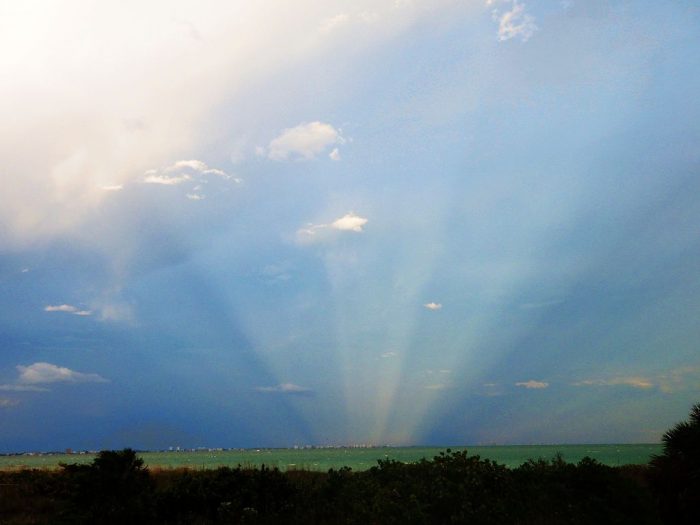
Anticrepuscular rays opposite the setting sun off the Florida Gulf Coast of the United States. Photo by Wojtow via Wikimedia Commons.

Anticrepuscular rays by Guillaume “Astro GuiGeek” Doyen.

View at EarthSky Community Photos. | On June 1, 2020, Tracey Gray captured anticrepuscular rays over Narrabeen in New South Wales, Australia.
Bottom line: If you want to see anticrepuscular rays, look carefully opposite the direction of the sun. They are most often seen at sunrise or sunset.
from EarthSky https://ift.tt/3dfO4Wh


View at EarthSky Community Photos. | Jo-Ann Hem Lee in the community of Trincity – in the Caribbean island country of Trinidad and Tobago – captured this image at sunrise on October 9. 2020.
We’ve all seen crepuscular rays, or sunrays, converging on the sun. They appear as pillars of sunlight, all converging at a single point, streaming up from the horizon or down through gaps in clouds. Next time you see them … turn around.
If you look opposite the direction of the sun, you might catch a glimpse of elusive anticrepuscular rays. These rays appear to converge towards the antisolar point – that is, the point on the sky opposite the sun. If you want to see them, remember these three tips:
1. Look in the direction opposite the sun, next time you see crepuscular rays extending from the horizon.
2. Look carefully. Remember that anticrepuscular rays are fainter and more elusive than crepuscular rays.
3. Watch around sunrise or sunset for anticrepuscular rays. That’s when they are are most frequently visible.

Scott Kuhn captured anticrepuscular rays as the moon was rising over Fort Mountain in northern Georgia.

Laura Bavetz wrote, “I have seen anticrepuscular rays before, but this is the first time that I have been able to capture them.”

Helio C. Vital caught these anticrepuscular rays from Saquarema, 50 miles (80 km) east of Rio de Janeiro, Brazil.

Photo taken by Karl Diefenderfer in Quakertown, Pennsylvania.

Jenney Disimon in Sabah, North Borneo, caught these anticrepuscular rays and a rising moon – and posted them to EarthSky Facebook – on June 4, 2015.

A moonset in 2014. The sun is about to rise in the east, and these rays are seen in the west. Photo by Ted Schultz of Titusville, Florida.

Anticrepuscular rays seen in the east at sunset, in Bermuda, by our friend Le-ann Perry. Notice the rising moon. Also, look in the lower right of this photo, where you can see a bit of Earth’s shadow over the sea.

Anticrepuscular rays – seen in the east at sunset – in Nevada. Shreenivasan Manievannan posted this photo on EarthSky Facebook in July 2014. Visit Shreeniclix Photography.
Les Cowley of the great website Atmospheric Optics says:
Like crepuscular rays they are parallel shafts of sunlight from holes in the clouds and their apparently odd directions are a perspective effect. Think of a long straight road, it converges towards the horizon but turn around and it also converges to the opposite horizon. Crepuscular and anticrepuscular rays behave in the same way.
Anticrepuscular rays are not rare but they must be sought carefully. When ordinary crepuscular rays are visible, turn around and search for their opposite numbers.
See photo of crepuscular rays extending across the entire sky at Les Cowley’s website

Anticrepuscular rays over the Pacific, viewed from an aircraft. Photo by Geoffrey A. Landis, September 11, 2007, via Wikimedia Commons.

Anticrepuscular rays opposite the setting sun off the Florida Gulf Coast of the United States. Photo by Wojtow via Wikimedia Commons.

Anticrepuscular rays by Guillaume “Astro GuiGeek” Doyen.

View at EarthSky Community Photos. | On June 1, 2020, Tracey Gray captured anticrepuscular rays over Narrabeen in New South Wales, Australia.
Bottom line: If you want to see anticrepuscular rays, look carefully opposite the direction of the sun. They are most often seen at sunrise or sunset.
from EarthSky https://ift.tt/3dfO4Wh



Aucun commentaire:
Enregistrer un commentaire